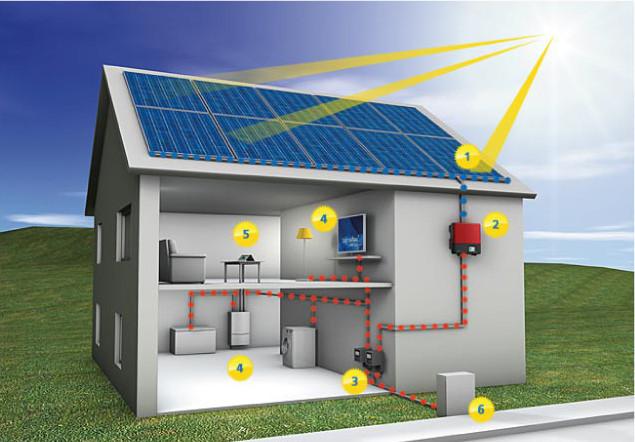It starts with the solar panels.
Solar panels (also called photovoltaic or PV panels) capture energy from the sun and turn it into DC power. This is essentially done by harnessing speeding photons to create an electrical current within a solar panel. To get the best out of a solar system and generate more electricity, panels are usually mounted on your roof that has the most sun exposure, typically north or north west. Modern solar panels are not only efficient and produce high ‘yields’ (amount of energy they produce), but are built to last, where the standard conforms to a 25 year performance warranty.
Which leads to the inverter.
To convert the electricity generated by the solar panels you need an inverter. Without the inverter, all free energy simply goes to waste. An inverter’s basic function is to ‘invert’ the direct current (DC) output into alternating current (AC). Alternating current is the standard used by all commercial appliances across the planet, powering everything from washing machines and televisions, to large scale industrial equipment. Inverter technologies have advanced significantly over the past few 5 years incorporating a full suite of applications such as WiFi, data monitoring, and advanced utility controls.

